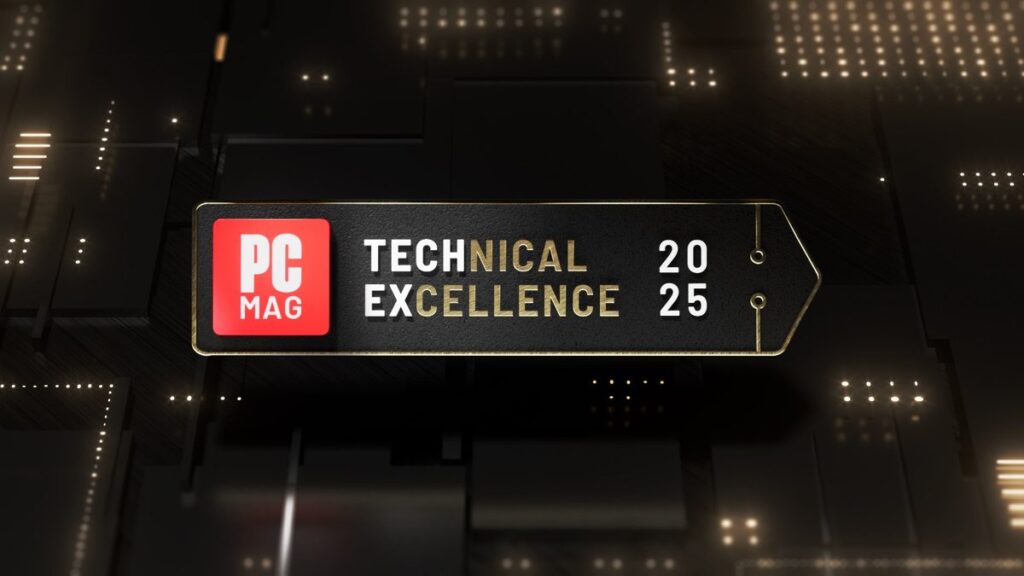
Four decades ago, the computing industry was in its infancy, and artificial intelligence was largely confined to the realm of science fiction. It was during this transformative era that the editors of PC Magazine embarked on a mission to spotlight the individuals and technologies propelling the nascent PC industry forward. Thus, the PCMag Technical Excellence Awards were born, first reported in the August 6, 1985 issue. These awards quickly became a significant event, featuring choreographed ceremonies and lavish galas to honor true tech pioneers. Among the inaugural winners were the creators of Intel’s 16-bit 286 processor, which powered the first IBM PC, and groundbreaking products like Apple’s first LaserWriter printer and the Telebit 10,000kbps TrailBlazer modem.
Fast forward forty years, and the technology landscape has evolved dramatically. Yet, the drive for innovation remains as strong as ever. In 2025, PCMag is excited to reboot the Technical Excellence Awards, affectionately known as TechEx, to recognize the trailblazers of today. This year’s 26 winners, meticulously selected by PCMag’s expert editors and writers, represent breakthroughs in computing, electronics, connectivity, transportation, and artificial intelligence. From advancements in graphics and display technologies to pioneering developments in computer-brain interfaces and autonomous vehicles, these innovators are pushing the boundaries of what is possible in the tech industry.
Nvidia DLSS 4: Revolutionizing Gaming Graphics
Nvidia’s Deep Learning Super Sampling (DLSS) technology, first introduced in 2019, has once again transformed the computer graphics landscape with the release of DLSS 4 earlier this year. This technology enables GPUs to render graphics at lower resolutions to enhance performance while employing machine-learning techniques to sharpen the image quality. With DLSS 4, Nvidia’s latest GPUs can generate multiple AI-created frames between rendered ones, significantly boosting effective frame rates.
While DLSS 4 is particularly lauded for its impact on high-end PCs, it has also democratized access to advanced graphics features like ray tracing for gamers with entry-level hardware. As Matthew Buzzi notes, “With DLSS 4 and multi-frame generation, even a gamer with an entry-level Nvidia GeForce RTX 5050 can enjoy smooth frame rates and ray tracing across more than 100 modern titles.”
AMD Ryzen AI Max+ 395: A Versatile CPU for the Future
AMD’s Ryzen AI Max+ 395, commonly known as “Strix Halo,” is a standout in the world of CPUs. This highly efficient System on Chip (SoC) is designed to adapt to various computing environments, from compact desktops to gaming tablets and mobile workstations. The Max+ 395 features a design that allows it to access a sliding amount of main system memory as graphics memory, up to an impressive 96GB.
Based on AMD’s “Zen 5” architecture, the Strix Halo boasts 16 CPU cores and 40 GPU cores, making it a powerhouse for productivity, content creation, and AI-driven tasks. John Burek highlights its potential, stating, “This pioneering CPU could be an x86 trailblazer for our AI-powered future.”
Innovation in Connectivity and Transportation
Connectivity and transportation have also seen remarkable advancements, as evidenced by T-Mobile’s T-Satellite service. In collaboration with SpaceX, T-Mobile has launched a constellation of 650 Starlink satellites to eliminate cellular dead zones across the United States. This ambitious project transforms the sky into a network, allowing users to stay connected even in remote locations.
Meanwhile, Waymo’s autonomous vehicles are reshaping the future of transportation. Operating in multiple US cities, Waymo’s self-driving cars are expanding access to autonomous rides and continuously improving their capabilities. With plans to debut its sixth-generation software platform in 2026, Waymo is poised to lead the self-driving taxi industry.
Artificial Intelligence: A New Era of Possibilities
The realm of artificial intelligence continues to evolve, with OpenAI’s ChatGPT Deep Research feature leading the charge. This tool leverages the web to generate comprehensive reports on any topic, complete with citations and in-text references. As Isa Fulford, research lead at OpenAI, explains, “This is the company’s first widely used agent capable of reasoning for extended periods to synthesize information and produce research and analysis.”
Additionally, Google Gemini’s Nano Banana offers a free AI image editing tool that excels in ease of use and versatility. With its ability to edit images based on prompts, Nano Banana democratizes image editing for the average user, making it one of the best AI image editing packages available.
As technology continues to advance at an unprecedented pace, the 2025 PCMag Technical Excellence Awards serve as a testament to the power of innovation. These awards celebrate the visionaries and pioneers who are shaping the future of technology, pushing the boundaries of what is possible, and inspiring the next generation of innovators.






